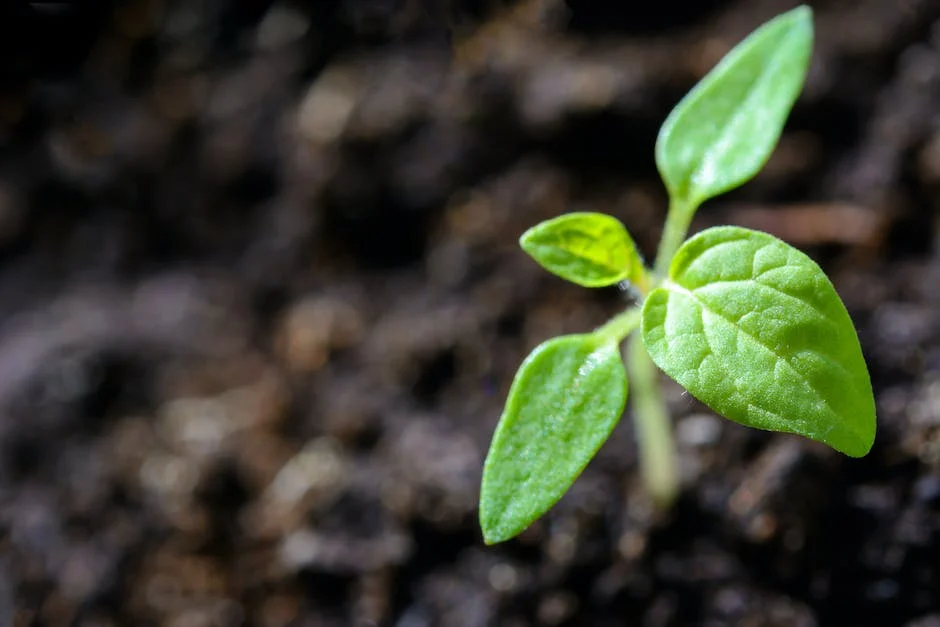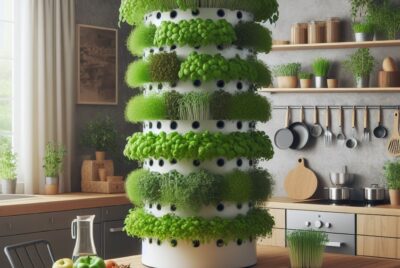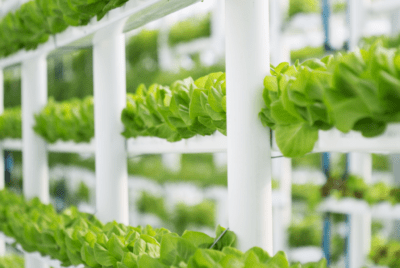Soil vs Soilless: Comparing Nutrient Delivery in Microgreens
Introduction to soil and soilless cultivation
Soil cultivation involves growing plants in natural soil, while soilless cultivation uses alternative growing mediums like coco coir, peat moss, or hydroponic systems. In soil cultivation, nutrients are derived from the soil itself, whereas in soilless cultivation, nutrients are provided through a nutrient solution. Each method has its benefits and drawbacks, and the choice between the two depends on factors such as space, convenience, and the specific needs of the plants being grown.

Nutrient delivery in soil cultivation
In soil cultivation, nutrients are delivered to microgreens through the soil medium. The nutrients needed for the plants’ growth and development are found in the soil itself, providing a natural and organic source of nourishment. This method allows the plants to absorb the essential elements they require directly from the soil, promoting healthy and robust growth. Nitrogen, phosphorus, potassium, and other trace minerals are readily available in the soil, supporting the microgreens’ nutritional needs.
Benefits of soil cultivation for microgreens
Soil cultivation for microgreens offers several benefits that make it a popular choice for many growers. Unlike soilless cultivation, which relies on nutrient solutions, soil cultivation provides natural nutrients and supports the growth of healthy, flavorful microgreens. With soil cultivation, you can easily create a sustainable and environmentally friendly growing environment for your microgreens. Additionally, soil cultivation allows for better moisture retention and root development, leading to stronger, more vibrant microgreens.
Nutrient delivery in soilless cultivation
In soilless cultivation, plants receive their nutrients from a solution mixed with water, known as hydroponic nutrient solution. This solution contains all the essential nutrients required for plant growth, such as nitrogen, phosphorus, and potassium. The nutrients are readily available to the plants, allowing for efficient uptake and utilization. Additionally, the controlled environment of soilless cultivation ensures that the plants receive the precise amount of nutrients they need, leading to optimized growth and nutrient absorption.
Benefits of soilless cultivation for microgreens
Soilless cultivation for microgreens offers several benefits that make it attractive to growers. Some of the advantages include:
- Reduced risk of soil-borne diseases
- More precise control over nutrient delivery
- Less mess and easier cleanup
- Potential for higher yields
- Ability to grow in indoor and urban environments
Comparing nutrient absorption in soil and soilless cultivation
Soil-based cultivation involves the use of natural soil, which serves as the primary source of nutrients for the microgreens. In contrast, soilless cultivation relies on a hydroponic or aquaponic system to deliver nutrients directly to the plants’ roots. In soil-based cultivation, the microgreens absorb nutrients from the soil, while in soilless cultivation, the nutrients are dissolved in water and delivered directly to the roots. Understanding the differences in nutrient absorption between these two cultivation methods can help determine the most effective approach for your microgreen cultivation.
Environmental impact of soil vs soilless cultivation
Soilless cultivation methods usually require less water and can be more easily controlled to avoid nutrient runoff. This reduces the risk of environmental pollution. Additionally, soilless cultivation can be done in urban areas, reducing the need for transportation and therefore lowering carbon emissions. However, using soil in cultivation practices encourages biodiversity and can contribute to the health of local ecosystems. Soil also acts as a natural carbon sink, sequestering carbon dioxide from the atmosphere and aiding in the fight against climate change. Additionally, soil provides a stable base for plants, allowing for better root anchorage and overall plant health.
Best practices for nutrient management in microgreen cultivation
When cultivating microgreens, it’s important to carefully manage the nutrients for optimal growth. Here are some best practices to consider:
- Soil-based cultivation: If you choose to grow microgreens in soil, ensure that the soil is well-drained and rich in essential nutrients such as nitrogen, phosphorus, and potassium. Regularly monitor the soil moisture and pH levels to maintain an optimal growing environment.
- Soilless cultivation: When opting for a soilless method, such as hydroponics or aquaponics, focus on providing a balanced nutrient solution to the plants. This involves carefully monitoring and adjusting the nutrient levels in the water to ensure that the microgreens receive the necessary elements for healthy growth.
- Consider the specific nutrient requirements: Different types of microgreens may have varying nutrient requirements. Research the specific needs of the microgreens you are cultivating and adjust your nutrient management practices accordingly.
By implementing these best practices, you can effectively manage the nutrient delivery in your microgreen cultivation, leading to healthy and vibrant crops.
Choosing the right cultivation method for your needs
When choosing a cultivation method for microgreens, it’s important to consider your specific needs. Here are a few things to keep in mind as you decide:
- Soil-based Cultivation:
- Advantages:
-
- Natural and familiar medium for plants.
- Provides a wide range of nutrients for the microgreens.
- Disadvantages:
-
- May increase the risk of pests and diseases.
- Requires more careful watering and monitoring.
- Soilless Cultivation:
- Advantages:
-
- Reduces the risk of pests and diseases.
- Allows for precise control of nutrient delivery.
- Disadvantages:
-
- Requires a more precise understanding of nutrient needs.
- Initial investment in growing medium and nutrients.
Consider factors such as your experience level, available space, and the specific needs of the microgreens you plan to grow to determine which cultivation method is best for you. Some popular cultivation methods for microgreens include soil-based cultivation, hydroponic cultivation, and using grow mats. Each method has its own requirements and advantages, so it’s essential to research and choose the one that aligns with your resources and preferences.
Conclusion and summary
In conclusion, both soil and soilless methods have their pros and cons when it comes to growing microgreens. Soil is a natural and traditional growing medium, providing essential nutrients and a stable foundation for the plants. On the other hand, soilless mediums offer a clean and convenient alternative, with precise control over nutrient delivery. Depending on your preferences and resources, you can choose the method that best suits your needs and goals. Keep in mind that both methods require proper attention to watering, lighting, and overall care to ensure successful microgreen cultivation.
FAQs on Soil and Soilless Cultivation
- What is soilless cultivation?
Soilless cultivation, also known as hydroponics, is a method of growing plants without using soil. Instead, plants are grown in nutrient-rich water solutions or inert growing media such as gravel, sand, or perlite.
- What are the advantages of soilless cultivation?
Soilless cultivation offers several advantages, including efficient use of water and nutrients, the ability to grow plants in areas with poor soil quality, and the potential for higher yields in a controlled environment.
- Can soilless cultivation be used for all types of plants?
Soilless cultivation can be used to grow a wide variety of plants, including vegetables, herbs, and some fruiting crops. However, certain plants may require specific nutrient solutions and environmental conditions to thrive in a soilless system.
- How is soilless cultivation different from traditional soil-based cultivation?
In soilless cultivation, plants’ roots are directly exposed to the nutrient solution, allowing for precise control over their nutritional intake. Traditional soil-based cultivation relies on the soil to provide nutrients, which can vary in quality and composition.
- What are the key considerations for successful soilless cultivation?
Successful soilless cultivation requires careful monitoring of pH levels, nutrient concentrations, and environmental factors such as temperature and humidity. Additionally, proper aeration and root support are crucial for promoting healthy plant growth in a soilless system.




